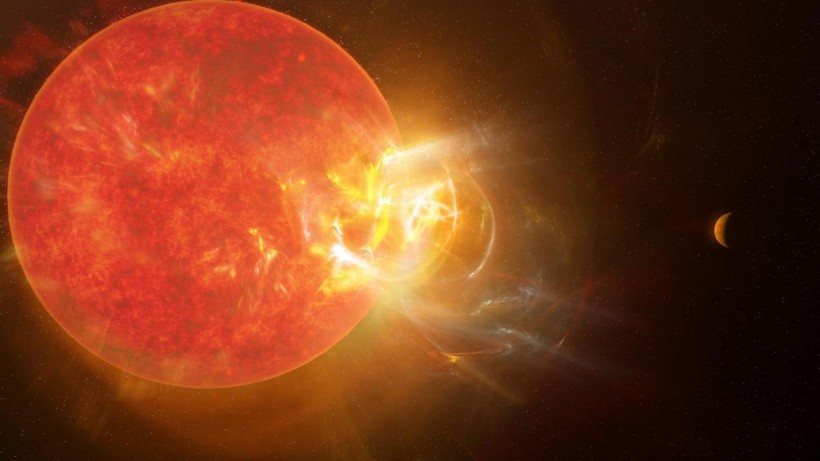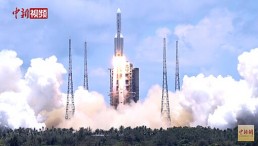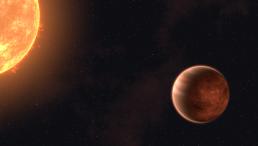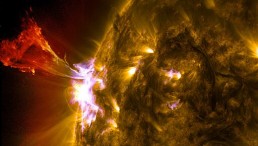A research team finally used Artificial intelligence (AI) to calibrate NASA photographs of the Sun. The data scientists are examining to study the star will be improved as a result of this.
Experts said the gadgets are subjected to an unceasing stream of solar particles and bright light when observing the Sun. Telescopes' sensitive lenses and sensors begin to deteriorate over time. Scientists calibrate such equipment regularly to maintain the accuracy of the data they communicate. This ensures that they understand precisely how to interpret the data.
The Solar Dynamics Observatory, which has been delivering high-resolution photographs of the Sun for over a decade, is the focus of this investigation. Her photographs allowed scientists to examine in greater detail a variety of solar phenomena that might produce space weather and have an impact on astronauts, technology, and the environment on Earth and in space. However, the gadget must be calibrated on a regular basis.

Artist's conception of a violent flare erupting from the star Proxima Centauri.
Researchers said solar activity has a major impact on the interplanetary medium and space weather around the Earth.
By detecting the solar magnetic field and light emission from the multilayered, multithermal, and dynamic solar atmosphere, researchers added that remote-sensing devices on board heliophysics space missions give a pool of information about solar activity.
Researchers uploaded their study, titled "Multichannel Autocalibration for the Atmospheric Imaging Assembly Using Machine Learning," in the journal Astronomy and Astrophysics.
New AI Makes NASA's Sun Images More HD?
NASA and other satellite organizations are having trouble taking particularly accurate photographs of the Sun, Phys.org said.
According to space experts, most solar telescopes struggle to acquire high-resolution images of the solar system's star.
Since solar telescopes are typically subjected to never-ending bright sunlight and solar particle streams, they added various challenges. As a result, the sensor and other sensitive lenses on the device frequently degrade over time.
ALSO READ: AI to Automate Identification of Landing and Exploration Sites on the Lunar Surface
This is where the latest artificial intelligence technology comes into play. The researchers involved chose to investigate the usage of machine learning or AI after discovering flaws with NASA's solar telescopes and other related space technology.
They went on to say that their innovation will be contingent on AIA (Atmospheric Imaging Assembly), a satellite agency that analyses several wavelengths of light, recognizing solar flares.
"This was the big thing. Instead of just identifying it on the same wavelength, we're identifying structures across the wavelengths," Dr. Luiz Dos Santos, a solar physicist at NASA's Goddard Space Flight Center, said in a statement released by the space agency.
Other Details Of the New Solar Telescope AI
According to the researchers of the new AI for NASA, the machine learning system would be trained to recognise solar structures.
They went on to say that it should be able to compare solar flares using AIA data. Researchers will need to incorporate photos obtained by sound rocket calibration flights into their artificial intelligence model to make this possible.
Experts also stated that they will test if their innovation might determine the proper calibration required for more accurate Sun photographs.
To commemorate the SDO's tenth anniversary in space, Daily Mail shared a 10-year time-lapse of the Sun in June.
The space agency maintains a library of the SDO's best images from the last decade, including bizarre plasma tornados in 2012 and black regions known as 'coronal holes,' which have minimal extreme ultraviolet emission.
RELATED ARTICLE: Japan's Baseball-Sized Transforming Robot Ball to Land on Moon in 2022, What Can It Do?
Check out more news and information on Space in Science Times.













!['Cosmic Glitch' in Einstein's Theory of General Relativity Could Be Explained in This New Scientific Tweak [Study]](https://1721181113.rsc.cdn77.org/data/thumbs/full/53435/258/146/50/40/cosmic-glitch-in-einsteins-theory-of-general-relativity-could-be-explained-in-this-new-scientific-tweak-study.jpeg)
